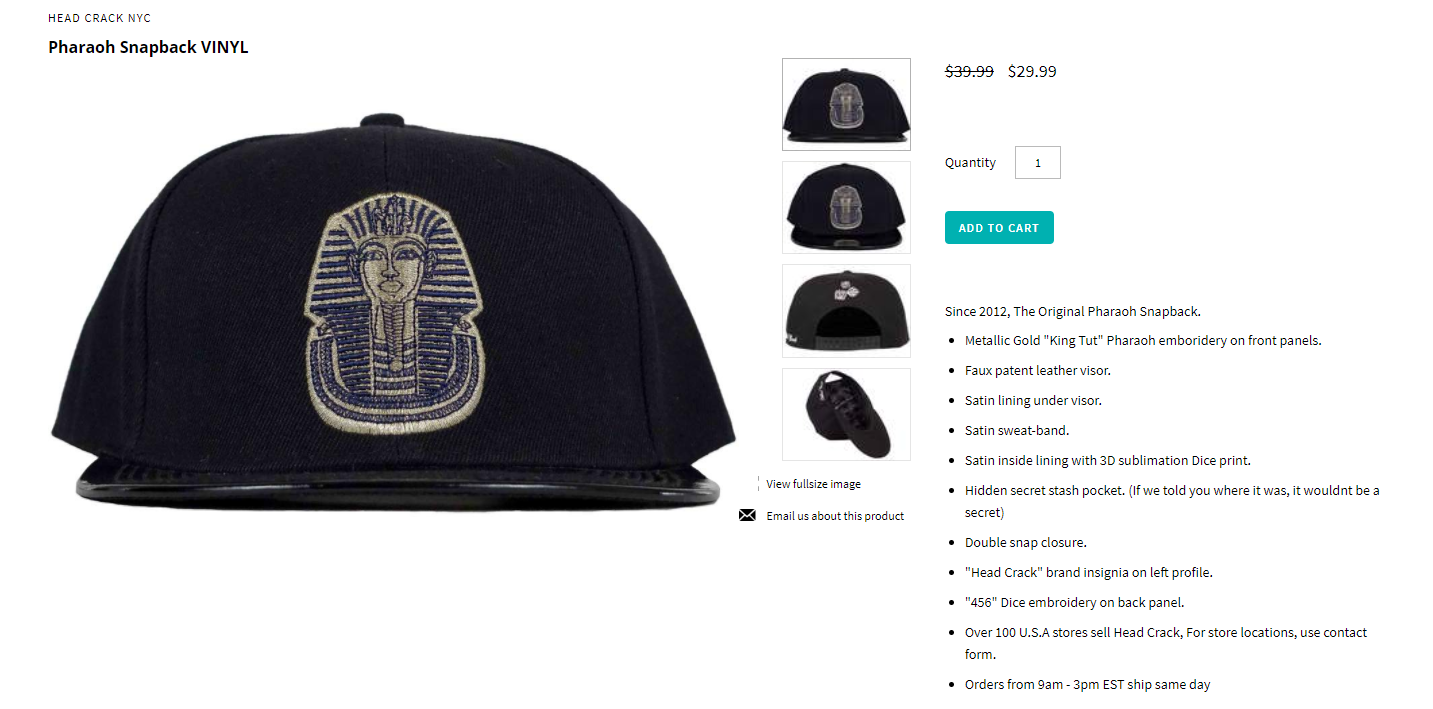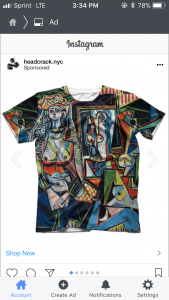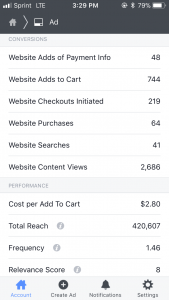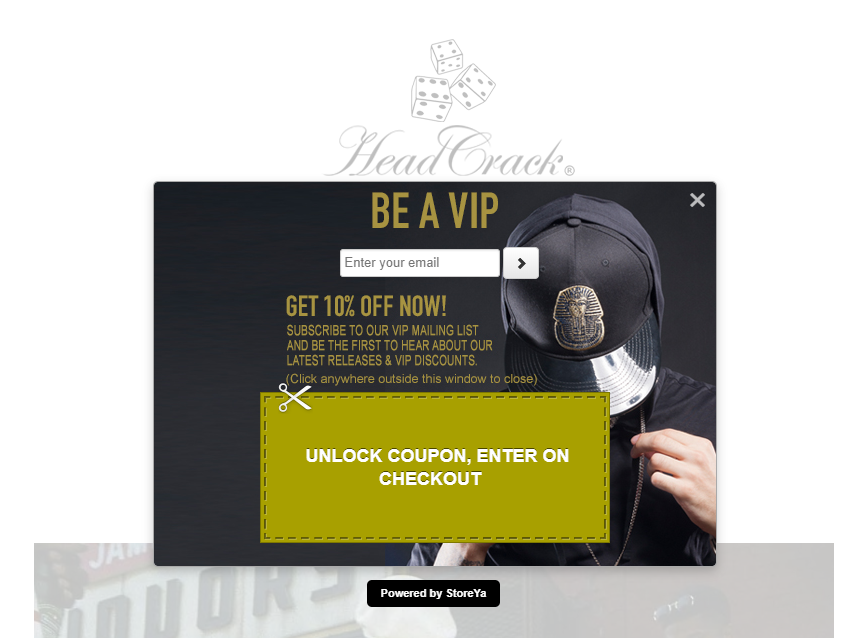Sometimes, to win at eCommerce you just have to roll the dice! In 2012, “semi-full-time musician” Amir Elshafiy, AKA Gliffics, proved just that when he decided to launch Head Crack NY from his Brooklyn apartment.
Now a half-a-million-a-year business whose motto is, “Life’s a Risk, Roll the Dice,” Amir took a very hands-on approach with this brand in the same way he tackled his business and has grown a mega business in just five years.
His secret lies in creating a product line that is simple but unique and designed specifically for and in tune with his target audience. Understanding the importance of forming personal relationships, having topnotch product photos, and researching all the ins and outs of his niche, Amir is an eCommerce success story we can all learn from!
We chatted with Amir to what it took to build a winning online fashion brand, how he got started, how he launched his first product, and all the marketing tricks, must-have apps and top advice that helped him shape his $500k-per-year business.
1. Share with us a bit of background about you and the brand you created.
I used to be a semi-full-time musician. I say ‘semi’ because outside of my day job in finance, everything I worked, planned and prepared for was 100% music biz related.
Head Crack NYC was started out of my Brooklyn NY apartment in 2012. The term “Head Crack” comes from a dice game called Cee-Lo, where when a player rolls a 4, 5 & 6 it is an automatic win.
I own 100% of the company, but I have about 5 team members who work in all areas from fulfillment and manufacturing to graphic design and web development, which help make running my business smoother. At the capacity I produce, I couldn’t do it alone and have a personal life and I most certainly wouldn’t be able to scale up while working solo.
2. How did you come up with your business idea?
Head Crack NYC was initially created as a brand for my merchandise that I needed to sell at my shows to help raise money for studio time, rehearsals, tours, etc. My first piece was the “Pharaoh” snapback hat, and it sold so well at shows that people began to buy more merchandise from me than music.
From there, I decided to visit local shops and to my surprise I was accepted more often than not. I thought it was a great idea to begin to push both my music and my clothing brand, so I created a website, but initially I did not do as well online as I did in the stores.
3. Take us through the process of creating and launching your initial product.
I took a very hands-on approach with my brand, just as I did with music. I wanted to know every part of the business. I do not personally sew my products together, but I took a course on sewing and learned basic pattern-making and stitching, etc.
I flew to Asia to meet with factories when I did not have any clue what to do there. I figured meeting the factories when I was producing such a small quantity would help work in my favor because of the respect that comes with flying 16 hours across the world blindly, and it did.
I then connected with a few friends who could do things that I could not, such as web and graphic design. I even hired a designer to help me bring my ideas to life. Once I created my first round of products, I got the ball rolling by doing photo shoots, getting my website updated and visiting retailers.
4. What is your most effective way to attract new customers?
First, creating a product that’s simple yet stands out. Second, getting the product to stores and sold online with true photos that really represent the item. Posting on social media, writing emails and offering incentives like discounts off an initial order by entering their email.
Social media giveaways are also a neat way to build a following and interest in your brand. If the product is free and people do not engage with it, I would be worried.
5. What other types of marketing have you had success with?
Mainly I market with Google, Facebook, Instagram and emails. I do retargeting and shopping ads on Google, and with Facebook and Instagram I use carousel “shop now” ads. With regard to email marketing, I have found that offering special discounts and purchase links to new items in an email blast has been very effective.
Bonus Content: Your Complete Guide to Google Shopping
6. What are the must-have apps that you are using?
I really like Coupon Pop because of the control and ease I have with creating my pop up incentives. It’s very affordable and I have had a great deal of success with it in a very short time. The stats are also 100% accurate because I can verify everything in my Shopify backend.
FOMO is another great app that I use. It basically cycles random banner pop ups on my site with a product that was sold, and who purchased it. This is a cool tool to let new visitors know that people are actually buying from your site and gives a sense of urgency for those wanting that same product and a feeling that they might miss out on it.
7. What have been the most influential resources for building your business? Books, blogs, podcasts, etc.
Shopify does a really good job of keeping store owners educated and up-to-date on trends and best practices. Other than that, definitely books, and Google, which has been my greatest tool.
Anything I need to know, I would type it in as many ways as possible and read through as many articles as possible until I found what I was looking for. From there, it’s all trial and error: you have to give things a chance in order to see what does and does not work for your business.
8. What are the big future plans for your brand?
Staying consistent and knocking out new designs are my top priority. With that will come the need for larger space to hold inventory. So I’ll be looking into getting my business large enough where a warehouse would be a necessity. Eventually, I’d like to have a physical location of my own.
9. What’s the no.1 piece of advice you would give new eCommerce entrepreneurs?
Making products that actually speak to someone’s lifestyle or needs makes a world of difference. If you have a product that needs an explanation, it’s not ideal. Products that speak for themselves resonate with the buyer naturally. And remember: keep it simple.
10. If you could go back to the very beginning, is there anything you would do differently?
I mean, of course, I would know which products will sell better than others and know not to put as much money into certain items I have produced. All in all, I have a large amount of knowledge that has also put me into a position where I can be hired to consult for other brands, which I do on the side currently.
With that being said, I really enjoyed my journey and I honestly would not change anything. All the trials and tribulations brought me here, and I’m in a good place because of it.
Wrap Up
We hope you found Head Crack NYC’s story, on how their fashion brand reached $500K in revenue, as inspiring as we did. For more winning secrets check out all of our Success Stories from top eCommerce entrepreneurs.
Recommended articles
 Better eCommerce Customer Acquisition: The Traffic Booster and its ‘Secret Sauce
Better eCommerce Customer Acquisition: The Traffic Booster and its ‘Secret Sauce
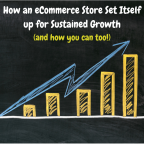 How an eCommerce Store Set Itself Up for Sustained Growth [Case Study]
How an eCommerce Store Set Itself Up for Sustained Growth [Case Study]
 The eCommerce Marketing Strategy that Generated 40,000 Leads [Case Study]
The eCommerce Marketing Strategy that Generated 40,000 Leads [Case Study]
 6 Word of Mouth Marketing Tips to Get People Talking About Your Business
6 Word of Mouth Marketing Tips to Get People Talking About Your Business
Comments
Powered by Facebook Comments
